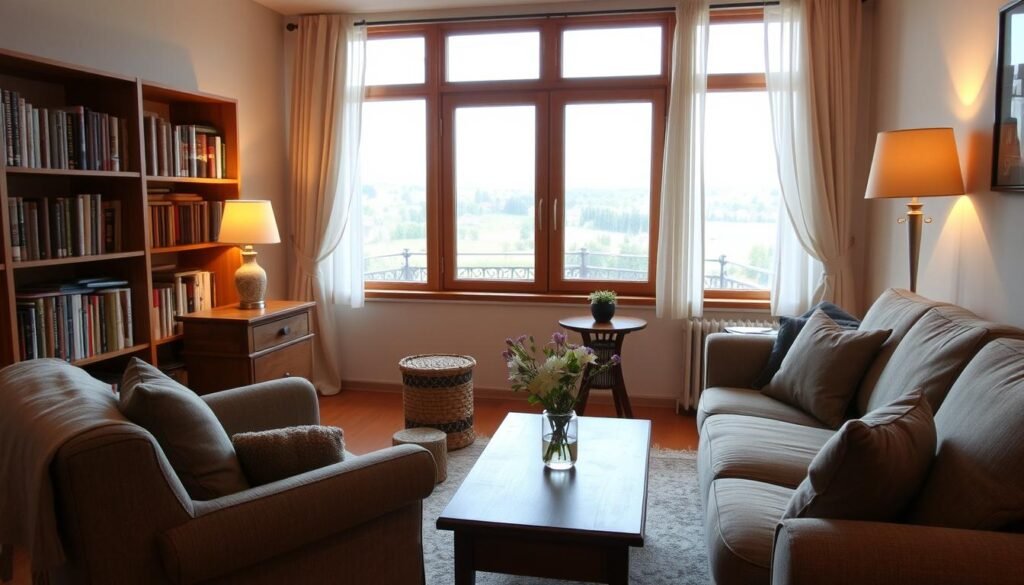
Retirement Planning Australia Superannuation Explained Simply

One afternoon, Jan and Tom sat at their kitchen table with a cuppa and a spreadsheet. They wanted to know what a comfortable life might cost and whether their savings would cover it. They found ASFA’s clear numbers and felt calmer fast.
The ASFA Retirement Standard is Australia’s trusted benchmark guide much used to turn weekly budgets into real, everyday choices. You’ll see what a comfortable or modest life looks like for couples singles and for one person living alone.
In this guide you’ll get a plain-English picture of how your super works with the Age Pension and what lump sums at age 67 mean. You can skim the numbers or read the inclusions behind them.
By the end you’ll know where you sit today and how to aim for a healthy, vital connected lifestyle that fits your goals.
- Start here: your simple map to a secure retirement in Australia
- retirement planning Australia superannuation explained
- The ASFA Retirement Standard: your benchmark for comfortable and modest lifestyles
- Superannuation balances required to achieve your goals at age 67
- Age Pension, lump sums and income: how they fit into your retirement standard
- How much super you might need today and how to check your progress
- Design your budget for a vital, connected lifestyle in retirement
- Private health: choosing cover that suits your needs and budget
- Utilities and internet: watch utility costs, pick fast reliable NBN and right internet data
- Everyday living: meals at inexpensive restaurants, leisure and club memberships
- Transport and home: car upkeep, repairs, and when to replace or update worn items
- Your next steps to retire with confidence in Australia
Start here: your simple map to a secure retirement in Australia
Start by choosing the retirement age you plan to stop full‑time work and the kind of day‑to‑day life you want. That simple choice shapes income needs, timing of lump sums and when you claim the Age Pension.
Use the ASFA retirement standard as a practical yardstick. It is updated quarterly to reflect real costs for utilities, communications and health. You can also check how much super you should have today with ASFA’s Super Balance Detective to see any gap for your age.

Identify big-ticket items early: private health or health insurance, energy bills and internet. Plan a home setup with a fast reliable NBN plan and the right internet data and data allowance for work and leisure.
- Sketch a steady savings pathway to your target age.
- Watch utility costs and trim recurring fees where you can.
- Compare private health insurance options before you change status.
Keep the map flexible. Revisit it yearly and read updates like retirement income expectations so you adapt to market and cost changes.
retirement planning Australia superannuation explained
Your super balance and the age pension often act together to pay for everyday costs and the extras you value.
What your super does beyond the Age Pension
Super is your personal savings and investment vehicle that tops up the Age Pension so you can afford more than basics.
It funds healthcare extras, travel and hobbies that the pension alone may not cover. The ASFA approach assumes many people draw down some savings while also receiving a part age pension.

How retirement age, lump sums and income streams work together
Your chosen retirement age affects how long your pot must last. Taking an initial lump sum at that point gives you capital to convert into a steady income stream.
Model both sources together: a lump sum can top up cash flow now, while a tailored income stream preserves capital for later. Couples singles face different household costs and pension eligibility, so tailor the mix to your situation.
- The ASFA method uses a 6% earnings assumption and a 2.75% AWE deflator to keep targets in today’s dollars.
- Check how much super you have and whether an early or later exit changes the required income and lump sum strategy.
The ASFA Retirement Standard: your benchmark for comfortable and modest lifestyles
ASFA sets out clear annual budgets that show what modest and comfortable living look like in today’s dollars. You can compare single and couple figures side by side to see real differences in costs and choices.

Singles and couples: annual budgets at a glance
ASFA’s numbers show a single comfortable income around $53,289 and a couple comfortable near $75,319 a year.
Modest tiers sit lower: about $34,522 for a single and $49,992 for a couple. These sums map directly to everyday expenses comfortable modest households face.
What comfortable vs modest buys you
Comfortable includes top-tier private health insurance, regular leisure activities, a reliable car and an annual domestic trip plus occasional overseas travel.
Modest pares back with basic private health insurance, fewer meals out and constrained home repairs, but still plans for a domestic trip or short breaks.
Connectivity, utilities and everyday extras
Aim for fast reliable nbn and the right data allowance so streaming and video calls don’t push up internet data bills. Keep a close watch utility costs and budget for meals at inexpensive restaurants, wardrobe updates and planned home repairs.
- See at a glance how budgets translate into daily choices.
- Use the Standard to pick the tier that matches what you value most.
Superannuation balances required to achieve your goals at age 67
Clear numerical waypoints help you see whether your savings match the lifestyle you want at age 67. Below are the ASFA targets in today’s dollars so you can compare what you have with what you need.
Comfortable lifestyle: couples and singles
Target balances for a comfortable life at age 67 are roughly $690,000 for a couple and $595,000 for a single. These figures come from the asfa retirement standard and assume you draw down capital alongside some Age Pension support.
Modest lifestyle and the role of the Age Pension
For a modest lifestyle the asfa retirement standard shows around $100,000 for both couples and singles. The identical modest figures reflect the Age Pension’s strong role in funding basic needs.
Renting privately raises required balances
If you rent privately, modest targets rise to about $340,000 for couples and $385,000 for singles. Higher housing costs explain the jump in balances required to achieve the same living standard.
Behind the numbers
ASFA’s estimates use a 6% assumed investment earnings rate and a 2.75% AWE wage deflator to keep values in today’s dollars. The methodology assumes you’ll draw down a lump sum over time and receive a part Age Pension.
- Use these balances required as waypoints, not fixed rules.
- Adjust targets for home ownership, health and whether you expect to retire earlier or later than age 67.
- Model your own cash flows so you know what you need to required achieve your goals.
Age Pension, lump sums and income: how they fit into your retirement standard
A clear mix of pension income and lump-sum capital can make everyday costs easier to handle. The asfa retirement standard treats the Age Pension as a steady base and models lump sums in today’s dollars so you can see how both sources work together.
Why ASFA assumes part Age Pension now and into the future
ASFA assumes many people will receive a part Age Pension because eligibility often phases in as balances required fall over time. The Age Pension is indexed to CPI or wages growth (whichever is higher), so it helps preserve purchasing power as costs rise.
Turning a lump sum into sustainable income
Converting a lump sum into an income stream needs clear choices about investment mix, drawdown rates and how long you expect to live. ASFA uses a 6% earnings assumption and a 2.75% AWE deflator and models drawing down capital alongside pension receipts.
- Balance drawdowns with pension entitlements to smooth cash flow and potentially reduce tax.
- Keep close watch on discretionary spending and utility use if your budget is tight.
- Use the benchmark guide much like a starting plan, then personalise for fees, risk and spending.
- Revisit your numbers annually small drawdown tweaks can have a big long-term effect.
How much super you might need today and how to check your progress
Begin with a simple measurement: your current balance versus the ASFA target for your age. That one check shows whether you are on track or need to act.
Use ASFA’s Super Balance Detective to gauge your super today
ASFA’s Super Balance Detective lets you enter your age and see a benchmark of how much super you should have today.
Plug your age in, note the suggested figure, and compare it to your account balance. This gives a straight answer on how much super today you hold against a commonly used benchmark.
Assessing your gap: balances required vs what you’ve saved
Compare your balance with the asfa retirement standard targets for age 67 to estimate your savings gap in today’s dollars.
"Use the Explainer’s assumptions to build a like‑for‑like comparison."
- If you’re ahead, check whether your goals favour a comfortable or modest lifestyle and set your new target accordingly.
- If you’re behind, consider contribution boosts, fee reviews or asset allocation changes to close the gap.
- Recalculate annually and keep clear records of balances and contributions so you can measure progress with confidence.
For broader cost context and changing household expenses, see this note on rising living costs: how costs have shifted recently. Use that while you review how much super you need today.
Design your budget for a vital, connected lifestyle in retirement
Start with a clear list of essentials: private health cover, reliable internet, regular social activities and a plan for car and home upkeep. This helps you set realistic weekly and annual spending targets.
Private health: choosing cover that suits your needs and budget
Decide on private health options that match likely care needs and the premiums you can pay long term.
Private health insurance at the comfortable level often covers extras like dental and better hospital choices. Modest budgets may opt for basic cover and top up as needed.
Utilities and internet: watch utility costs, pick fast reliable NBN and right internet data
Build a utilities plan that locks in value and keeps you online for video calls, telehealth and streaming.
Choose a fast reliable NBN plan and the right amount of internet data so costs make sense for your use. Keep a close watch utility bills and compare providers yearly.
Everyday living: meals at inexpensive restaurants, leisure and club memberships
Budget for regular leisure activities and modest treats like meals at inexpensive restaurants.
Club memberships and local classes support social life and wellbeing without large costs. Plan a modest annual domestic trip or a few short breaks to recharge.
Transport and home: car upkeep, repairs, and when to replace or update worn items
Schedule routine servicing, insurance and tyre replacements, and set aside a sinking fund for major repairs.
Maintain a rolling home schedule to replace update worn appliances before they fail. A simple budget replace update each year cuts surprise bills and keeps things running.
- Decide on private health cover you can sustain.
- Lock in value with a reliable NBN and sensible internet data.
- Keep an eye on energy and water so utility costs make less impact.
- Budget for leisure, meals at inexpensive restaurants and an annual domestic trip.
- Plan for car and home repairs and budget replace update items over time.
"Small predictable budgets for health, connectivity and home keep you independent and socially engaged."
Your next steps to retire with confidence in Australia
Pick your target lifestyle, jot down the key inclusions, and use ASFA tools to measure progress.,
Decide if you want a comfortable or modest life and note what matters most to you as a single or in a couple. Use the asfa retirement standard and the Super Balance Detective to check gaps against the balances required achieve your goals.
Compare your current balance to the superannuation balances required at your chosen retirement age. Write a one‑page action plan: boost contributions, review private health, and lock in a fast reliable nbn and energy deals.
Set six‑ to twelve‑month reminders, share the plan with your partner or adviser, and revisit ASFA tools regularly so you stay confident and on track in Australia.
If you want to know other articles similar to Retirement Planning Australia Superannuation Explained Simply you can visit the category Investing.






Leave a Reply